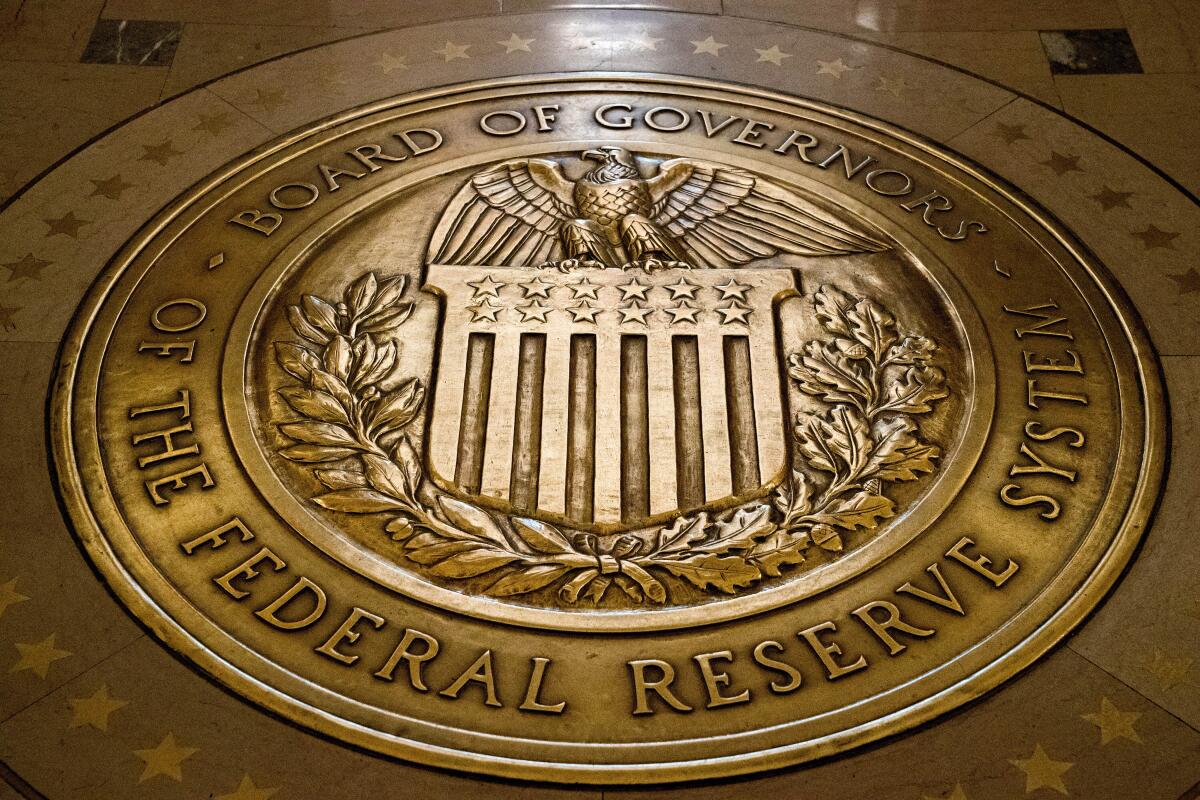What’s next for interest rates? Fed minutes suggest cautious approach

- Share via
Minutes from the Federal Reserve’s latest gathering show most officials remained more worried about the risk of cutting interest rates too soon than keeping them high for too long and damaging the economy.
A summary of the Jan. 30-31 Federal Open Market Committee meeting released Wednesday showed policymakers want to see more evidence that inflation is firmly on a path to their 2% target before lowering interest rates, with some raising concerns that progress could stall. Together, the minutes reinforced expectations that borrowing costs will remain high for the foreseeable future.
Fed officials agreed that interest rates were probably at their peak, but the exact timing of the first rate cut remained unclear. That said, the minutes indicated growing support among a group of policymakers for slowing the pace at which the Fed shrinks its asset portfolio. Such a move would work with rate cuts to start easing policy.
“Most participants noted the risks of moving too quickly to ease the stance of policy and emphasized the importance of carefully assessing incoming data in judging whether inflation is moving down sustainably to 2%,” according to the meeting minutes released Wednesday.
Only a “couple” of officials pointed to risks to the economy from waiting too long to cut. Participants highlighted the uncertainty of how long monetary policy would need to remain restrictive.
“The minutes confirmed the Fed is quite reluctant to start easing if it means it might have to backtrack by slowing down cuts or, worse, hiking again,” said Derek Tang, an economist with LHMeyer/Monetary Policy Analytics. “They would rather start cuts later even if they have to speed cuts up to catch up.”
Treasurys remained lower and the Standard & Poor’s 500 index held losses on the day. Economic data have largely come in hotter than most forecasters expected since the central bank’s last gathering, disrupting the rapid slowing in inflation seen at the end of 2023 and validating the Fed’s cautious approach.
U.S. employers boosted payrolls by the most in a year, and the consumer price index rose by more than expected across the board. Economists forecast the Fed’s preferred gauge of underlying inflation will show a rise at the fastest pace since early 2023 when it’s released next week.
Markets have significantly dialed back expectations for early and rapid rate cuts as a result, with traders in the federal funds futures market now betting the Fed will first lower rates in June. Investors also expect three or four cuts in 2024, a pace more in line with policymakers’ median projection in December.
Fed officials will update their projections for rates and the economy at their March 19-20 meeting. Ahead of that gathering, Fed Chair Jerome H. Powell will have an opportunity to offer fresh thoughts on the outlook when he testifies before Congress in early March.
Policymakers voted unanimously to leave interest rates unchanged in a range of 5.25% to 5.5% last month while revamping their post-meeting statement. The central bank dropped a reference to potential additional policy “firming” and instead indicated it wouldn’t be appropriate to reduce rates without “greater confidence” about the trajectory of inflation.
Powell said earlier this month that it was unlikely policymakers would reach that level of confidence by the central bank’s March meeting. And earlier Wednesday, Fed Gov. Michelle Bowman said the time to cut interest rates was “certainly not now.”
Speaking at a separate event Wednesday, Richmond Fed President Thomas Barkin said recent economic data highlighted how price pressures in some sectors are still too high, despite improvement in the overall inflation picture.
The minutes indicated that some officials said it may be appropriate to start slowing the pace at which the Fed shrinks its asset portfolio, a process known as quantitative tightening. That would in effect reduce the amount of Treasurys the market would need to absorb, easing liquidity pressure. Against a backdrop of declining balances held at the Fed’s overnight reverse repo facility — a key liquidity tool for markets — many participants suggested that the committee should have an in-depth discussion about the balance sheet at the March meeting, which would guide an “eventual decision” on slowing the pace of runoff.
“Some participants remarked that, given the uncertainty surrounding estimates of the ample level of reserves, slowing the pace of runoff could help smooth the transition to that level of reserves or could allow the committee to continue balance sheet runoff for longer,” the minutes showed.
Even as officials discuss slowing the asset runoff pace, there was no indication in the minutes of support for stopping it altogether. A few participants said quantitative tightening could continue for “some time” even after the Fed starts cutting rates.
More to Read
Inside the business of entertainment
The Wide Shot brings you news, analysis and insights on everything from streaming wars to production — and what it all means for the future.
You may occasionally receive promotional content from the Los Angeles Times.










